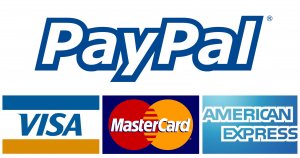The Evolution of Payments
Recently, the e-commerce world has taken over, changing the way people shop and make payments. Likewise, online banking offers a convenient way to transfer money quickly between accounts, so paying a friend for everything from a luxury car service to an airport for your holiday, to your share of a takeaway for example is easier than ever before. Online payments can be made via any computer, smart device or app.
Nowadays, with different payroll software and technology providers, it is possible, as a business owner to plug in your payment provider with your payroll company, making processes much more efficient.
According to recent surveys, the average UK adult made around 648 payments in 2015, equating to roughly 54 payments per month. It is believed that by 2025, that figure will have increased to 662, equating to closer to 55 payments per month online. Online payments are to be responsible, says Payment UK for the money paid in in cheques moving from 546 million times in 2015, to an estimated 237 million times in 2025.

How Online Payments Work
For an online payment, there are several roles that are assumed:
- The cardholder, people like you or I
- The merchant one is buying from; i.e. Asda, Topshop or John Lewis
- The acquirer, or the company which is offering the POS system (Point of Sale)
- The network like MasterCard or Visa
- The issuing bank which provides the card to the cardholder (NatWest, Halifax, Santander etc.)
- A loan provider [similar to a merchant] that requires repayment, for example, a company providing a guarantor loan to a consumer
In order for the merchant to get money from the cardholder, the acquirer, network and issuer act as the intermediaries – taking about 2% from the actual transaction in order to provide the ‘plumbing’ that links all the banks together. Where it gets complicated is when affiliates, foreign exchange rates and sales commission are added, to name a few.
Understanding Online Payments
For ease of understanding, payments can be spilt into two parts:
1) Acquiring, i.e. taking consumer money for merchants;
2) Disbursements, i.e. paying funds from merchants out to their supply chain.
While obviously linked, it takes place in two parts. When buying something on ASOS, for example, the money is credited from a consumer account and settled with ASOS. After that, ASOS would pay the vendor separately. The reason for this is about compliance and regulation.
If one were to pay the vendor directly, your bank would not know where the money’s destination is. Likewise, if the vendor received large amounts of money from different accounts, the bank would need to know where the money was coming from for legal reasons and. ASOS acts in the middle to simplify some of the compliance, as well as Anti Money Laundering (AML). ASOS, being international, can also manage the FX by having the function to present the price in the buyer’s currency and choosing how to pay by using drop down boxes.
Once a customer has paid ASOS, ASOS’s merchant acquirer asks the customer’s issuing bank to credit the money from their account, and settles it to ASOS. Next, the acquirer instructs the vendor to send out the goods. ASOD ultimately takes ownership of the products for a split second to meet the rules of regulation. Later in the process, ASOS will tally up the products sold by the vendor, and subtract commissions etc., then will instruct its bank to pay the vendor in his/her currency.
Who are the Major Players in the Industry?
Services like PayPal and WorldPay are revolutionary in making online payments and they also ensure things remain very convenient. PayPal is normally cheaper, but is slightly less secure than World Pay. However, WorldPay can be expensive for credit cards. Things also may get more complex when a retail business seeks out a merchant loan and needs to change payment provider (read more).

What They Offer
PayPal and WorldPay offer a variety of different services to ensure safe payments are made online. They provide the services of:
Instant transfer: The money is immediately credited to the recipient’s account. That person can then immediately transfer the money to his or her personal bank account. If someone wants to send a transfer, they must have a debit card or a credit card registered with PayPal or WorldPay as a backup for their funds. Think about it like writing a secure check, just without exposing any of your personal information for security.
Balance: If you have been sent money through PayPal, for example, you have a balance in your PayPal account.
Protection: Putting your PayPal or WorldPay purchases on a credit or debit card is a great idea. Not only are you protected by the services, but your credit or debit card company also backs you up in case of any fraud that could take place.



